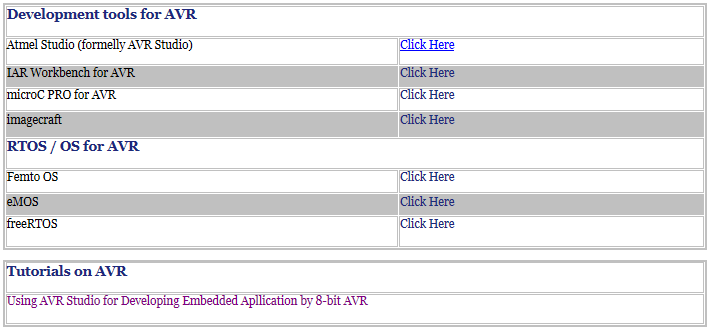AVR is a 8 bit RISC Processor, which was originally developed by two students at the Norwegian Institute of Technology, named as Alf-Egil Bogen and Vegard Wollan. It is understood that the name AVR stands for Alf Vegard RISC. Now AVR is under the umbrella of Atmel Co. Atmel has developed five different groups of AVRů
tinyAVR
This series have low pin count usually 32 pins, and low peripherals. Suitable for small applications.
megaAVR
This series have internal memory in 100s of KBs and has instruction for multiply and divide, suitable for small and medium level applications.
XMEGA
This series include support for cryptograpy and large internal memory, and suitable for applications like smart cards etc.
Application Specific AVR
With this series Atmel has launched application specific processors, like AVR chip with support of USB, AVR with support CAN etc.
32-bit AVR
These processors are of 32 bit and suitable to run OS like Linux etc. This series include SIMD and DSP instructions. These chips are used in high end applications like settop box, media players etc.
FPSLIC (AVR + FPGA)
AVR core with FPGA on a single chip, making it wonderful to implement users circuit in the chip itself.
For more information please visit
http://www.atmel.com/products/microcontrollers/avr/default.aspx
Now you can keep single stepping, content of port A will be keep modifying.
In this way there are many other features of AVR Studio. From AVR studio v6, now studio is referred as Atmel Studio, and this include support of ARM and AVR both. For ARM it support ARM Cortex-M.
Following webpage should be referred for Atmel Studio
http://www.atmel.com/Microsite/atmel_studio6/
